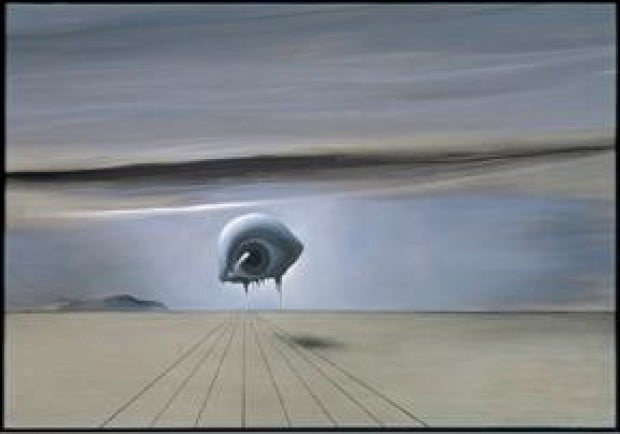
Salvador Dali, the mustachioed showman, would have loved the display of his work that can now be seen at the Los Angeles County Museum of Art. Called “Dali: Painting and Film,” the exhibition contains a cornucopia of his work, including drawings, paintings and films. Known mostly for his surrealistic paintings, Dali was also strongly involved in cinema and worked as a filmmaker, writer and director. This relationship of the two media is apparent in much of his work.
Approximately 100 works from around the world have been assembled in this major retrospective. Museumgoers will see the most famous of his paintings, “The Persistence of Memory,” with its droopy clocks, as well as the dream sequence he created for Gregory Peck in “Spellbound.”
The exhibit has been cleverly arranged so visitors can move from one area to the next in a continuous flow. In addition to viewing the imaginative works of art, one can sit on a bench and watch two of his outrageous films he co-wrote with director Luis Buñuel, “Un Chien andalou,” and “L’Âge d’or.” He worked with Buñuel in France and with Alfred Hitchcock in Hollywood during his World War II exile. Also screening is a film he made with Walt Disney, whom he greatly admired.
In addition to his fantastical paintings, the Spanish artist was able to show his creative ability in two portraits, one of Laurence Olivier as Richard III and another of Jack Warner. A series of drawings of Spanish nightlife illustrate his strong graphic ability.
Dali grew up during the time of the silent film and was absorbed by the technological advances. However, he knew from an early age that he wanted to be a painter. Fortunately, he was able to give expression to many of his ideas in the few films he co-created.
His dreamlike images dwell on death and sex, and interpretations are rampant. Again and again we see ants, bicycles, clocks and eyes. Even if the meanings cannot be resolved, the beautiful craftsmanship and incredible imagination can be admired.
Born in 1904 in a small town at the foot of the Pyrenees Mountains of Spain, Dali spent his boyhood in the fishing village of Cadaques, where his family built his first studio. He attended the San Fernando Academy of Fine Arts in Madrid and had his first one-man show in Barcelona in 1925. He gained international attention when three paintings, including “Basket of Bread,” were shown in the third annual Carnegie International Exhibition in Pittsburgh in 1928. He met his future wife, Gala Eluard, the next year in Paris, where he had one-man show. Eluard was married at the time to poet Paul Eluard. Nevertheless, she became Dali’s lover, muse and business manager.
Although Dali became the leader of the Surrealist Movement, he clashed with fellow surrealists and he was expelled from the group. He continued exhibiting surrealist works until the 1940s, but then he became entranced by the ideas of religion and science, incorporating the two disciplines into his work.
Fleeing Europe during World War II, Dali came to the States in the 40s where the Museum of Modern Art in New York gave the artist his first major retrospective exhibit in 1941. As he moved away from surrealism, Dali began a series of 19 large canvasses, using historical, scientific or religious themes. The more well known of these are “The Hallucinogenic Toreador,” “The Discovery of America by Christopher Columbus” and “The Sacrament of the Last Supper.”
Dali opened a museum in his hometown of Figueres, Spain in 1974. His health started to fail after his wife’s death in 1982 and even more after he was burned in a fire in 1984. Dali died Jan. 23, 1989.
The exhibition, “Dali: Painting and Film” will be on view at LACMA through Jan. 6. (Two visits are recommended). 5905 Wilshire Blvd., L.A.; 323.857.6000.
